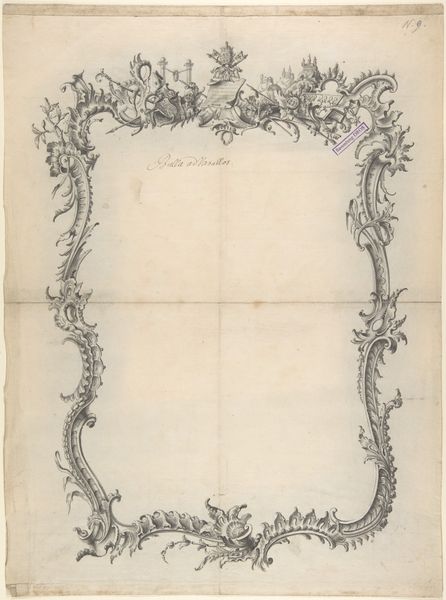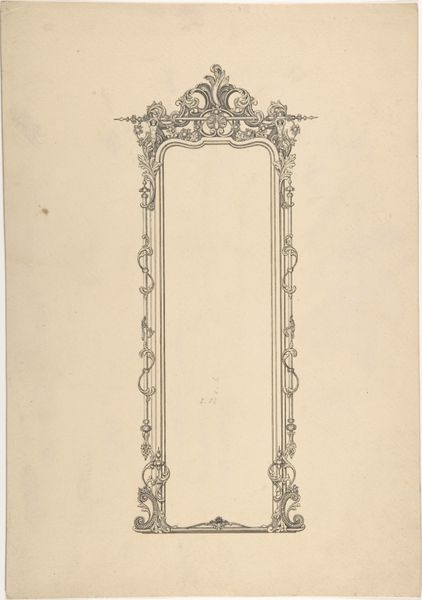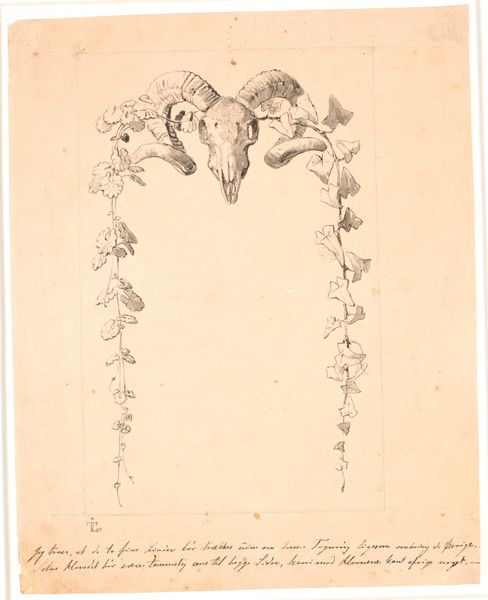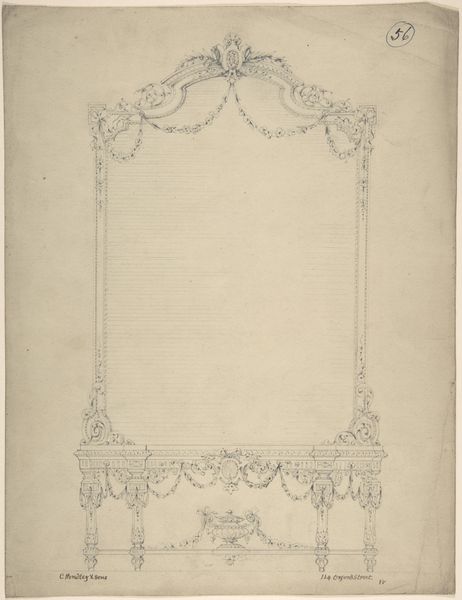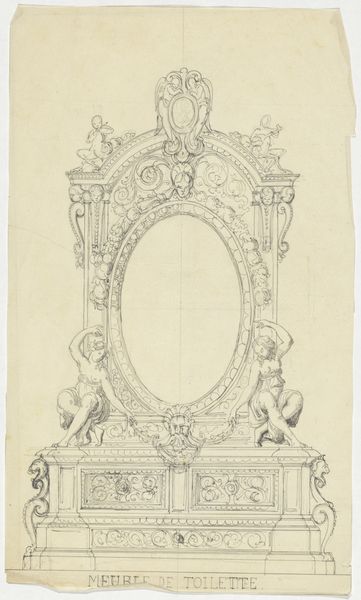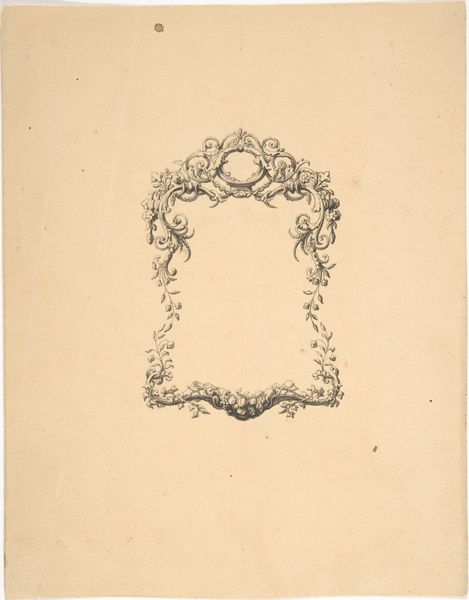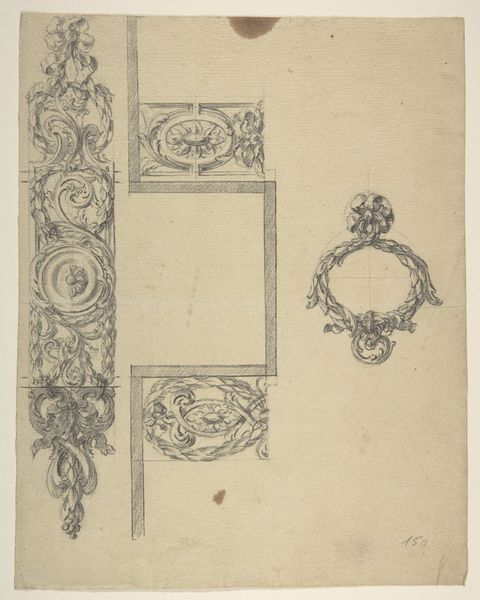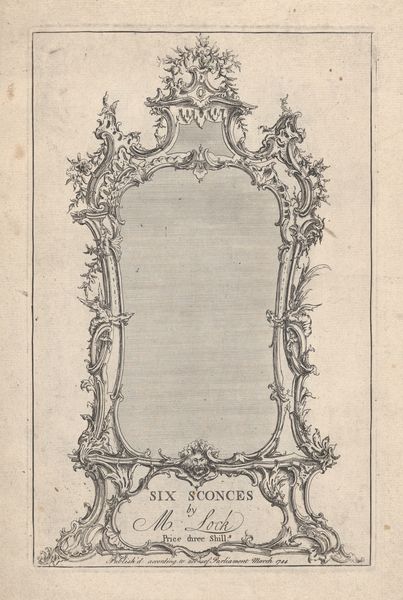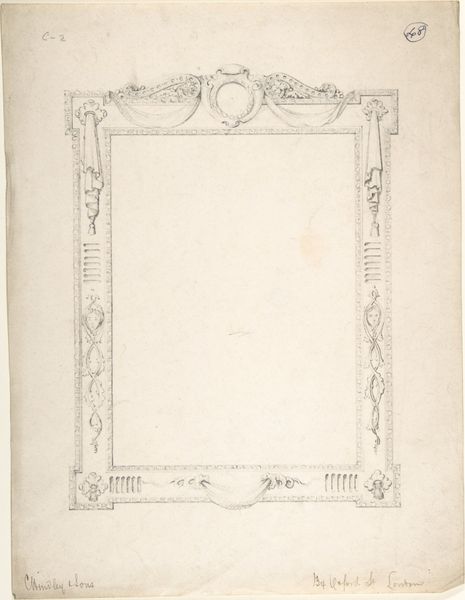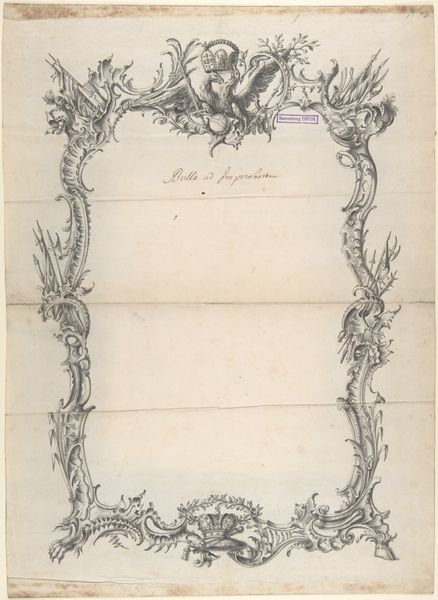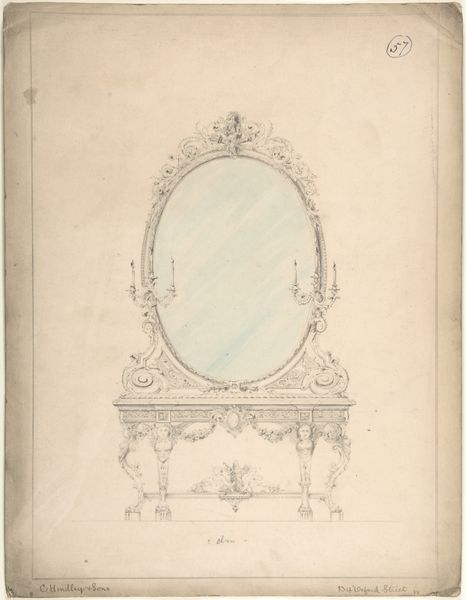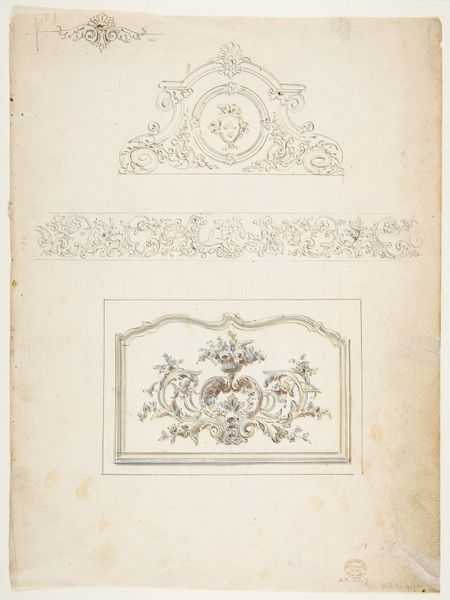
drawing, print, ink, pen
#
drawing
#
ink drawing
#
allegory
#
baroque
#
pen drawing
# print
#
pen sketch
#
figuration
#
ink
#
pen
#
history-painting
Dimensions: sheet: 17 11/16 x 13 1/4 in. (44.9 x 33.6 cm)
Copyright: Public Domain
Curator: This pen and ink drawing, aptly titled "Ornamental Frame with Eagle and Two Figures," dates from around 1700-1800. It's unsigned, so we attribute it to an anonymous artist. The level of detail is striking, isn’t it? Editor: It is! My immediate reaction is… intriguing. The figures are stiff, almost staged, yet the surrounding ornamentation feels wild, untamed. The contrast gives it a slightly unsettling feeling. Curator: Absolutely. Let's consider this within its historical context. Framing, of course, serves to highlight the importance of whatever is being framed. Given its dating, we can understand this ornamental piece in relationship to emergent nation states after the Peace of Westphalia in 1648. This era sees the solidifying of state power, visually demonstrated here with what appear to be militant figures holding either shields or swords on both sides of the drawing. Editor: And the eagle at the top further cements that idea. A very popular symbol of imperial power, isn’t it? Seeing the figures flanking what could have been a portrait, my immediate reading is of power, definitely. What would have been the political realities of who could have commissioned or made a work like this? Curator: Well, during that era, powerful families, or emergent bourgeoisies may have ordered this kind of work, to project status and align themselves with nobility. You're absolutely right about the eagle and other military images being tied to those systems of power and those hierarchies. We often look to how power circulates through images to understand whose stories are told—or are deemed valuable to tell. Editor: That makes me consider its absence of color even further. What were the different ways these types of frames were used, considering it was only drawn in pen and ink? Was the aim to reproduce and print it or just to leave it as a singular sketch? Curator: Given the medium and the clear linework, it seems like a design created to be reproduced. Engravings were incredibly popular at that time. If this were translated into print, it could easily become disseminated further—an incredibly powerful thought. The image of military might that we initially interpreted could gain widespread currency. Editor: So, it really prompts a broader understanding of how images not only reflect but also actively shape societal structures, perceptions of power, and identity. Looking again, it feels both like an echo of the past and a relevant reflection of the systems we still navigate. Curator: Precisely. This little sketch is such a revealing artifact!
Comments
No comments
Be the first to comment and join the conversation on the ultimate creative platform.
